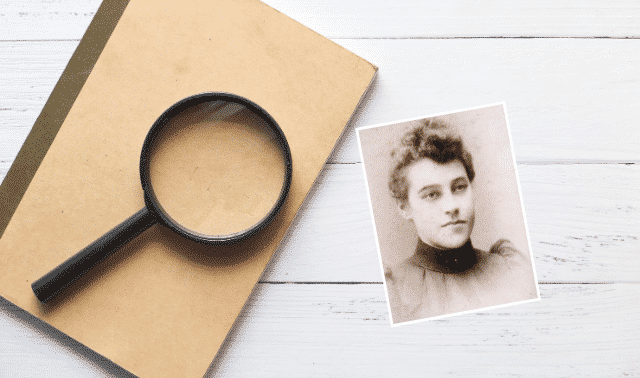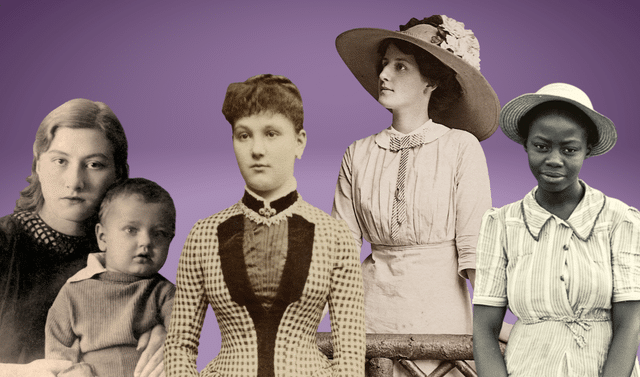
Tease out research leads on female ancestors and find their maiden names with the following record-by-record research advice. You can find more research advice in our guide to finding female ancestors and in A Genealogists’s Guide to Discovering Your Female Ancestors by Sharon DeBartolo Carmack (Betterway Books).
Cemetery records
Censuses
Court records
Death records
Land records
Marriage records
Naturalizations
Newspapers
Pensions
1. Cemetery records
A tombstone may bear a woman’s maiden or married name, just her first initial, or her husband’s name (“loving wife of John Doe”). No maiden name? Check nearby plots: If they’re relatives, the names could be clues to your female ancestor. Contact the caretaker or cemetery or church office for the burial record, which may contain details such as who purchased the stone.
2. Censuses
Search every census during a woman’s lifetime. Look for relatives, as young couples sometimes lived with parents. In her later years, a woman may be living with one of her children. You won’t find many women’s names in pre-1850 censuses, when only heads of household were recorded. Instead, search for the husband or father and inspect the household members’ tick marks for one who might be your female ancestor.
3. Court records
During many time periods, a woman didn’t have the right to leave a will unless her husband gave permission. But many unmarried, divorced and widowed women left wills. A woman also may be named in the will of her father, husband or son. (Even when a wife survived her husband, his will might appoint another guardian for their children.) For men who died intestate (without a will), research in court records for letters of administration distributing their property.
Divorces and divorce petitions were more common than you may think. Request court records from your ancestor’s county courthouse or search for microfilm in the FamilySearch Library’s (FsL) online catalog.
4. Death records
Death certificates often contain women’s maiden names, but the details are only as reliable as the informant, so be prepared for inaccuracies. Request the children’s death certificates, too—one may give a maiden name if another doesn’t. You can get death records from the state archives, or the county or state vital-records office where your relative lived.
If your ancestor died after 1962, search the Social Security Death Index using Stephen P. Morse’s One-Step search tool. Then you can order a photocopy of the Social Security card application (called an SS-5) from the Social Security Administration.
5. Land records
Though women rarely owned land, they may be named in deeds filed at county courthouses (check the FSL catalog for microfilmed records from your ancestor’s county). “Depending on the time period and the state laws, when a man bought or sold land, the record can include the name of his wife, and it might also include her release of dower,” says Carmack. A woman’s dower is her right to one-third her husband’s real property after his death, and she had to grant him the right to sell it.
Check both grantee (buyer) and grantor (seller) records to determine when the woman or her husband first appear as owning land, and when the land was sold—typically after the death of a spouse. Look for phrases such as et ux (and wife), and et al (and others); a very low purchase price; or names of children, grandchildren or siblings: These are clues the other party could be your female ancestor’s relatives.
6. Marriage records
Often the best sources of maiden names, marriage certificates or license applications are usually available from the same repositories that have death records. You also might find a certificate on FSL microfilm.
Look for marriage banns and bonds among church records, too. A bann is a wedding announcement usually made on three successive Sundays. Before the 20th century, a groom would sign a bond guaranteeing there was no reason the couple shouldn’t marry. The bride’s father or brother usually signed as surety. If one of the couple was younger than the legal marriage age, a parent or guardian would give signed consent The FHL has some microfilmed church records and added them to FamilySearch.
7. Naturalizations
Until 1922, wives were listed on their husbands’ naturalization records. After that, you can find separate records for married women (children under 16 were on their fathers’ forms). Before 1906, immigrants filed for naturalization in their municipal, county, state or federal court. For naturalizations after 1906, submit a Freedom of Information Act request to US Citizenship and Immigration Services using form G-639. But first, see if FamilySearch has the areas’ naturalizations.
8. Newspapers
Women may show up in the pages with recipes, sewing hints, ladies’ club news and gossip columns. Of course, check obituaries and the birth and wedding announcements, as well as notices of desertions, divorces, immigrations, bankruptcies and even unclaimed letters at the post office.
Historical newspapers are increasingly available online through subscription services such as GenealogyBank. Check with the library where your ancestor lived, and use Chronicling America to learn which newspapers covered your ancestor’s area and what repositories have them.
9. Pensions
A woman could file for a military pension when her husband or unmarried son died of war-related injuries. Widows had to send marriage records to assure the government it wouldn’t end up paying more than one pension on the same man. The National Archives and Records Administration has pension records for soldiers from 1775 to 1916; see the Web site for ordering information.
A version of this article appeared in the January 2008 issue of Family Tree Magazine. Last updated, April 2023.
Related Reads
FamilyTreeMagazine.com is a participant in the Amazon Associates Program, an affiliate advertising program. It provides a means for this site to earn advertising fees, by advertising and linking to Amazon and affiliated websites.






